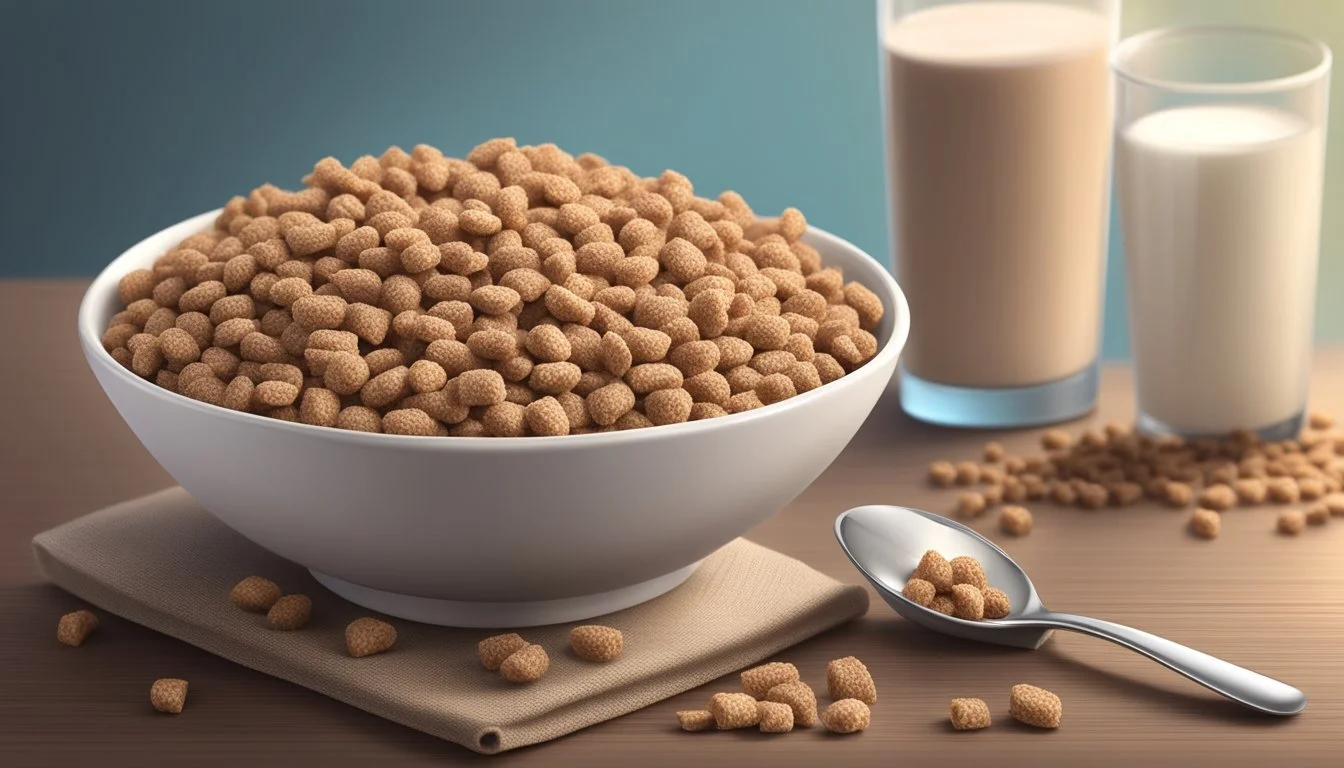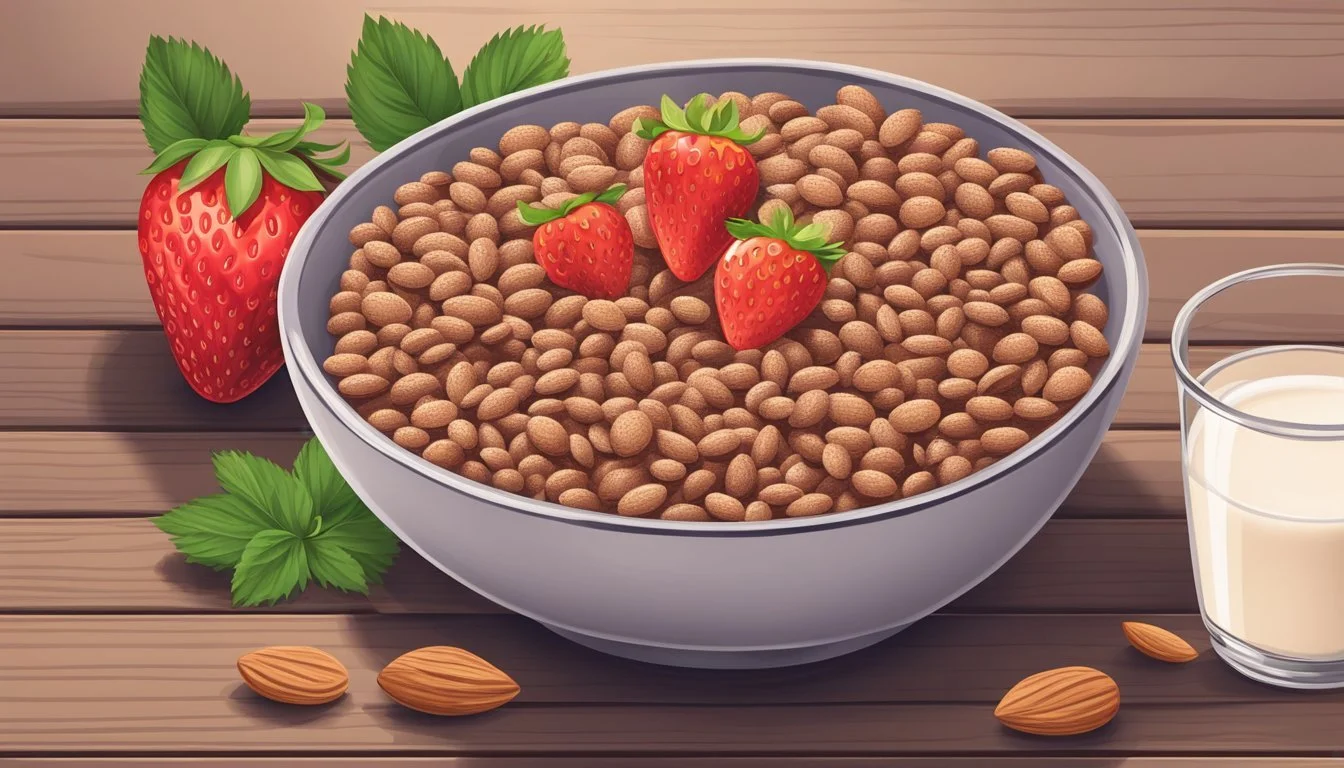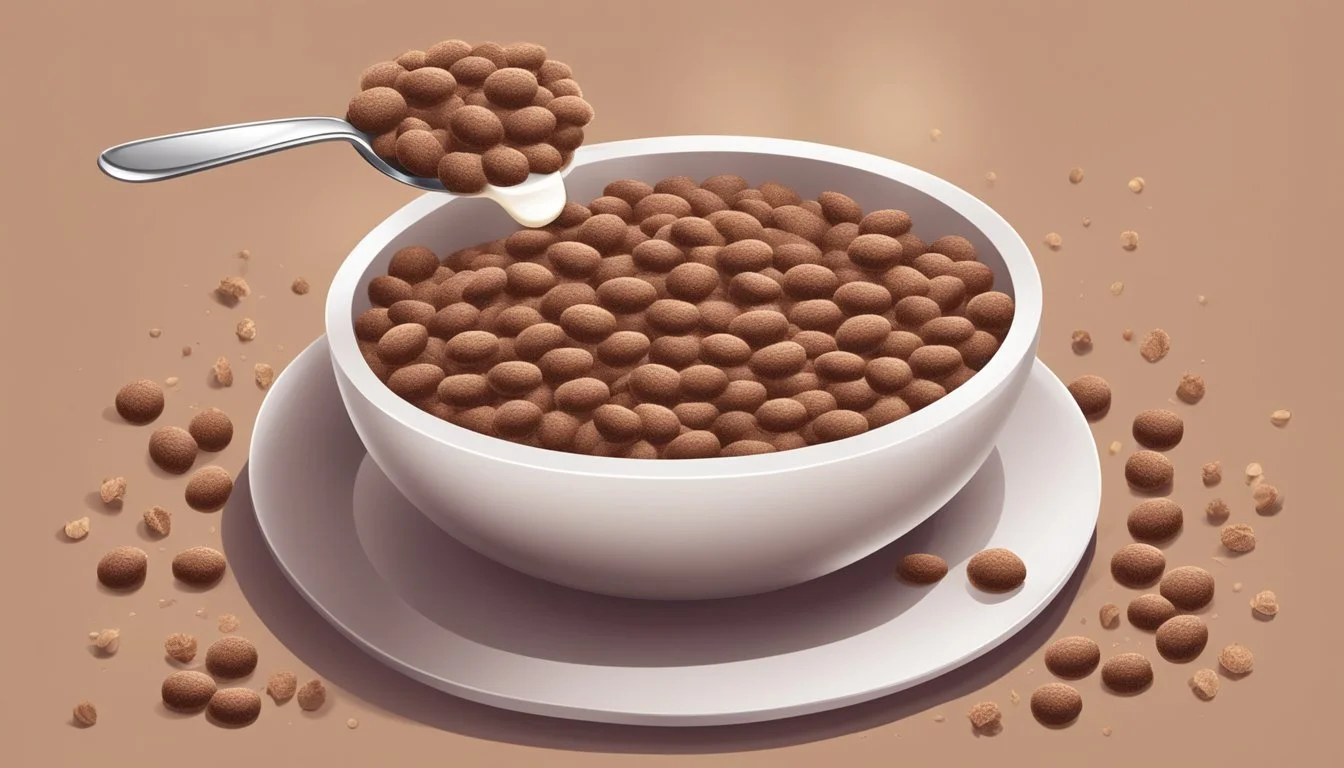Cocoa Krispies Nutrition Facts & More
Essential Facts for Health-Conscious Consumers
Cocoa Krispies, a popular breakfast cereal from Kellogg's, offers a chocolatey twist on the classic Rice Krispies. This crunchy cereal combines the familiar snap, crackle, and pop with a rich cocoa flavor that many find irresistible.
A single serving of Cocoa Krispies (1 cup or 40 grams) contains 150 calories, with 35 grams of carbohydrates, 2 grams of protein, and less than 1 gram of fat. The cereal's main ingredients include rice, sugar, and cocoa, providing a quick energy boost to start the day.
While Cocoa Krispies may be a tasty treat, it's important to consider its nutritional profile as part of a balanced diet. The cereal contains added vitamins and minerals, but it also has a relatively high sugar content. Understanding these factors can help consumers make informed choices about incorporating Cocoa Krispies into their breakfast routine.
Cocoa Krispies Compared to Other Breakfast Cereals
Nutritional Overview
Cocoa Krispies cereal provides a mix of macronutrients with a focus on carbohydrates. The cereal's nutritional profile includes calories, fats, proteins, and sugars in varying amounts per serving.
Calories and Serving Size
A single serving of Cocoa Krispies is typically 1 cup or about 31-40 grams. This serving contains approximately 120-150 calories. The calorie content may vary slightly depending on the specific product size and formulation.
For those monitoring their calorie intake, it's important to note that the serving size is relatively small. Many people may consume more than one serving in a sitting, which would increase the calorie count proportionally.
Macronutrients Distribution
Cocoa Krispies' macronutrient profile is primarily carbohydrate-based. A standard serving contains:
Total Fat: 1-1.5 grams (2% Daily Value)
Saturated Fat: 0.5 grams
Protein: 2-4.6 grams
Carbohydrates: 35-88 grams (percentage varies by serving size)
The cereal is low in fat, with saturated fat making up a small portion of the total fat content. Protein content is modest, contributing to about 5% of the total calories.
Carbohydrates and Sugars
Carbohydrates form the bulk of Cocoa Krispies' nutritional content. A serving provides:
Total Carbohydrates: 35-88 grams (varies by serving size)
Sugars: Amount varies (not specified in given data)
Dietary Fiber: Not specified in provided information
The high carbohydrate content is typical for breakfast cereals. While specific sugar content is not provided in the search results, it's worth noting that many flavored cereals contain added sugars.
Consumers should be aware that the cereal's carbohydrate content can significantly impact daily nutritional intake, especially for those monitoring their carb consumption.
Vitamins and Minerals Content
Cocoa Krispies cereal provides a range of essential vitamins and minerals to support daily nutritional needs. The cereal is fortified with key nutrients that contribute to various bodily functions and overall health.
Essential Vitamins
Cocoa Krispies contains several important vitamins. Vitamin C, an antioxidant, supports immune function and collagen production. Vitamin E acts as an antioxidant and aids in cell protection. The cereal includes B-complex vitamins like B1 (thiamin), B2 (riboflavin), B6, and B12, which play crucial roles in energy metabolism and nervous system function.
Vitamin A palmitate contributes to eye health and immune function. Vitamin D3 supports bone health and calcium absorption. Folic acid, a form of folate, is essential for cell growth and development.
Minerals Contribution
Iron is a key mineral in Cocoa Krispies, added as ferric phosphate. This mineral is vital for oxygen transport in the blood and energy production. The cereal also contains calcium carbonate, supporting bone and teeth health.
Zinc oxide is included, contributing to immune function and wound healing. While not prominent, trace amounts of other minerals like sodium and potassium may be present, which are important for fluid balance and nerve function.
The specific amounts of these vitamins and minerals vary, so consumers should refer to the product label for precise nutritional information.
Special Diet Considerations
Cocoa Krispies cereal raises important dietary considerations for individuals with specific nutritional needs or restrictions. Its ingredients and nutritional profile impact various special diets and food sensitivities.
Allergens and Sensitivities
Cocoa Krispies contain several common allergens. The cereal includes malt flavor from barley, making it unsuitable for those with gluten sensitivities or celiac disease. Soy ingredients are also present, which may cause reactions in soy-allergic individuals.
The product is manufactured in facilities that process peanuts and tree nuts. This creates a risk of cross-contamination for people with severe nut allergies. Milk ingredients are used, so the cereal is not safe for those with dairy allergies or lactose intolerance.
Cocoa Krispies do not contain eggs, fish, crustacean shellfish, or sesame. People with allergies to these foods can consume the cereal safely.
Dietary Restrictions
Cocoa Krispies are not suitable for vegan diets due to the inclusion of vitamin D3, which is typically derived from animal sources. Vegetarians can consume the cereal as it contains no meat products.
The cereal is not gluten-free or dairy-free. It contains minimal dietary fiber, with less than 1 gram per serving. This low fiber content may not align with diets focused on increasing fiber intake.
For those monitoring sugar intake, Cocoa Krispies contain 12 grams of sugar per 1-cup serving. This amount may exceed limits set in some low-sugar diets.
Ingredients and Additives
Cocoa Krispies cereal contains a mix of primary grains, sweeteners, flavorings, and added nutrients. The ingredient list includes both natural and artificial components, with some additives for color and freshness.
Primary Ingredients
Rice forms the base of Cocoa Krispies, providing the cereal's signature crispy texture. Sugar is the second main ingredient, contributing to the sweet taste. Cocoa, processed with alkali, gives the cereal its chocolate flavor and brown color.
Maltodextrin, a common food additive derived from starch, is also present. It serves as a thickener and filler, enhancing the cereal's texture and mouthfeel.
Additional Components
Palm kernel oil is included in small amounts, likely to improve texture and shelf life. Iodized salt, containing salt and potassium iodate, adds flavor and provides a source of iodine.
The cereal contains natural and artificial flavors, including malt flavor. For color, Red 40, Yellow 6, and Blue 1 are used. BHT (butylated hydroxytoluene) is added as a preservative to maintain freshness.
Declaration of Obligatory Allergens
Cocoa Krispies do not contain common allergens like nuts, milk, or eggs in their main ingredients. However, the product may be processed in facilities that handle these allergens.
It's important for consumers with severe allergies to check the packaging for any "may contain" statements or cross-contamination warnings. The cereal does contain ingredients derived from grains, which may be a concern for those with gluten sensitivities.
Product Packaging and Information
Kellogg's Cocoa Krispies cereal comes in various package sizes with detailed labeling. The packaging provides essential nutrition facts and ingredient information to consumers.
Labeling and Nutrition Facts
Cocoa Krispies packaging includes a Nutrition Facts panel that complies with FDA regulations. The label lists serving size, calories, and key nutrients. A typical serving of 31 grams (about 1 cup) contains 120 calories, with 5 calories from fat. The cereal provides 1 gram of total fat and 0.5 grams of saturated fat per serving.
Ingredient information is clearly displayed on the package. Major ingredients include rice, sugar, cocoa, and maltodextrin. The label also notes artificial colors like Red 40, Yellow 6, and Blue 1.
Packaging Details
Kellogg's offers Cocoa Krispies in multiple pack sizes. A common size is the 22.4-ounce box. The product container features the Kellogg's and Cocoa Krispies branding prominently.
For additional product details, consumers can access the SmartLabel platform. This digital tool provides expanded nutritional data, allergen information, and certifications. The SmartLabel for Cocoa Krispies includes a full ingredient list and details on vitamins and minerals.
Kellogg's branded website also offers comprehensive product information. It may include serving suggestions, product history, and sustainability practices related to Cocoa Krispies production.
Company and Brand Background
Kellogg's, the maker of Cocoa Krispies, has a long history of producing popular breakfast cereals. The company's commitment to quality and nutrition has shaped its brand reputation over many decades.
Kellogg's History
W.K. Kellogg founded the Kellogg Company in 1906 in Battle Creek, Michigan. The company began with the creation of Kellogg's Corn Flakes and expanded its product line over the years. Cocoa Krispies, introduced in 1958, became a beloved chocolate-flavored variant of Rice Krispies.
Kellogg's innovation in breakfast cereals helped establish it as a household name. The company's focus on nutrition and taste contributed to its growth into a global food manufacturing giant.
Consumer Trust and Assurance
Kellogg's maintains strict quality control measures to ensure product consistency and safety. The company's manufacturing facilities adhere to rigorous food safety standards.
Freshness is a priority for Kellogg's. Each package of Cocoa Krispies displays a "best before" date to help consumers enjoy the product at its peak quality.
Kellogg's provides detailed nutritional information on its packaging and website. This transparency helps build trust with health-conscious consumers.
The company also engages in various community and sustainability initiatives. These efforts contribute to Kellogg's positive brand image and consumer loyalty.







